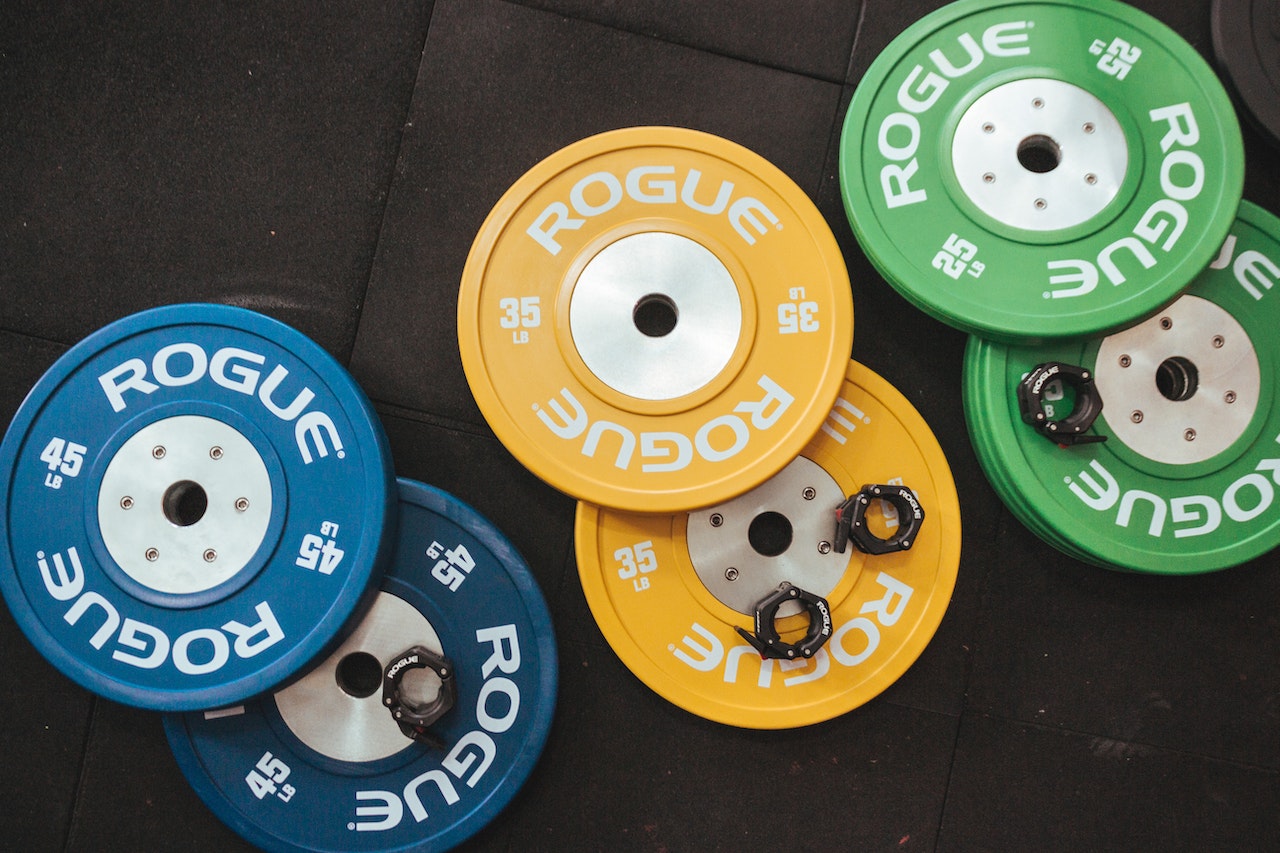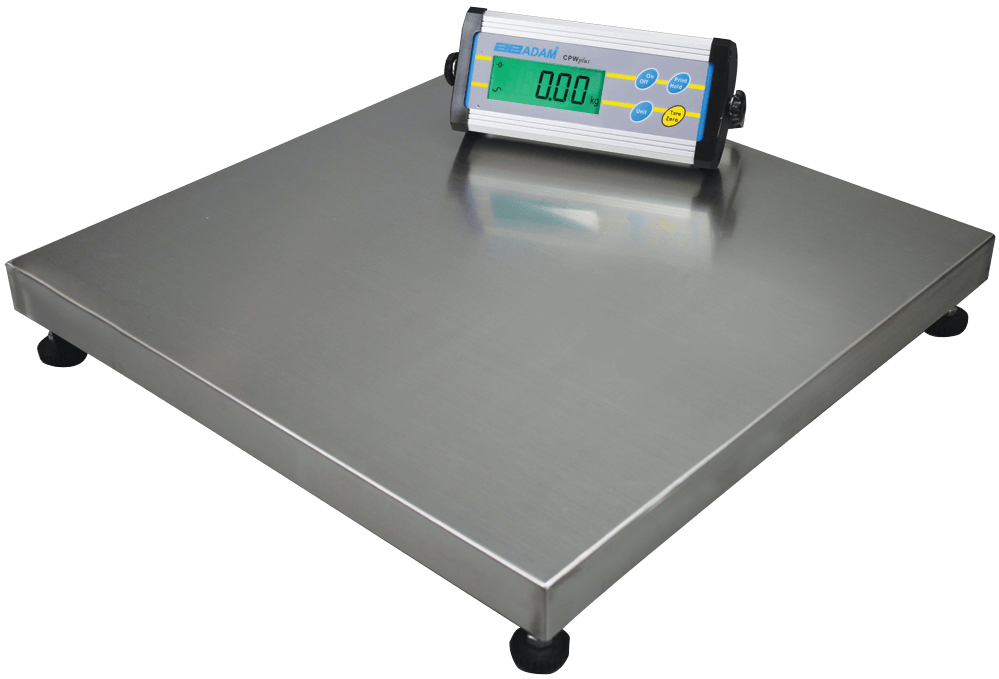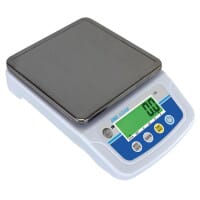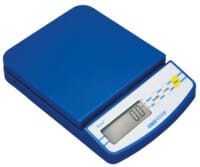
Superstrength is a sought-after superpower, and some make it a reality with a lot of work and dedication. Those who weight train become successful by measuring their food intake, keeping track of their body weight, and, of course, lifting a lot of heavy stuff. With the help of two weightlifting coaches, this blog will discuss several types of weight training, the benefits, and how our compact and floor scales raise the bar.
Coaches Ryan Kalkowski and Clare Michalak work to create personalized training programs for clients at Resilient Training Lab, a private facility in New Haven, CT. Kalkowski has 17 years of experience lifting weights himself, with 12 years of experience as a coach. Michalak has 4.5 years of personal lifting experience with 3 years as a coach and is also a PN1-certified nutrition coach. Both Kalkowski and Michalak use their extensive knowledge to help their clients reach their targets.
What are the Types of Weight Training?
There are several types of weight training that cater to different goals and preferences. The main three that we’ll be discussing in this blog are weightlifting, powerlifting and lifting weights.
Weightlifting and Powerlifting
Weightlifting, often incorrectly used as an umbrella term for any gym activity using weights, is its own distinct sport, with specific rules and regulations. It involves two Olympic lifts, the snatch and the clean and jerk. Each competitor gets three tries for each lift, with the objective of completing a single rep of the heaviest weight possible. The heaviest weight successfully lifted for the snatch will be totaled with the heaviest weight successfully lifted for the clean and jerk. The resulting number will be used to determine the winner of each weight class. Powerlifting is extremely similar, except powerlifters compete in the deadlift, squat and bench instead of the snatch and clean and jerk.
Michalak, as both a weightlifting and powerlifting coach, calls the “camaraderie, physical challenge, and structure to the training exciting.”

Lifting Weights
This type of weight training involves using weights to increase your strength and enjoy the resulting health and lifestyle benefits. While lifting weights isn’t necessarily considered a sport, those who lift might find that they’re frequently up against a competitor anyway – themselves. Kalkowski teaches his clients that though the overall goal may be feeling better rather than medals or prizes, they should still care about their progress. How much weight you can lift over time ultimately becomes a testament to the quality (and quantity) of your life later down the line.
What are the Benefits of Weight Training?
Improving your overall health is a wonderful and worthwhile benefit of weight training, but there are more, too! Some lesser-known benefits include having an easier time with daily activities, being able to participate in your favorite hobbies longer, and an increased sense of discipline.
Improved Health
The CDC recommends engaging in muscle-strengthening activities at least 2 days per week, on top of 75 to 150 minutes of vigorous or moderate aerobic exercise. Weight training helps you maintain your muscle mass and strength, which provides protection for your bones and joints. Healthy bones and joints enable you to do the recommended minutes of aerobic exercise (rather cyclical, right?), altogether resulting in improved moods, reduced pain, lower risk of heart disease, osteoporosis and more. Having significantly decreased the risk of many common health issues, weight training has the greatest benefit of reducing the risk of death.

Ease of Daily Activities
Let’s face it, a lot of daily activities involve lifting heavy stuff, whether it be lifting your child, a gallon of water, groceries or even your ridiculously heavy purse. Weight training makes these weights more bearable. Kalkowski said, “The stronger we get and the more we can lift, the lighter these daily encounters become relative to what we are capable of." Michalak adds that with that newfound strength comes empowerment and confidence, enabling you to effectively help yourself and others when necessary.
Maintaining Participation in Hobbies
Though your favorite hobbies, whether they be running, golfing, gardening or cycling may not directly involve much lifting, weight training can keep you enjoying these activities for longer. Take gardening, for example. Yes, weight training will make it easier to lift those large bags or pots of soil, but it will also provide the strength that your back needs to withstand extended periods of time hunching over, planting seeds or pulling weeds.

Increased Discipline
Michalak cites weight training as what made her her a more disciplined person, “able to set goals and keep habits with the tools I’ve gained from trying to improve my barbell lifts.” There is, she asserts, “an equation to success.” Since weight training requires a dedicated schedule and routine to get the best results, your self-control improves, assisting in other aspects of your life.
How Can Scales Benefit Those Who Weight Train?
Now, we’ve been talking about lifting weights, but what about the tools that measure weight? Scales and balances have their place in weight training as well, including measuring food and bodyweight.
Weighing Food
Those who lift often have goals that they, or their coaches, set for themselves. For example, they want to lose some weight and/or build some muscle, set a personal record or even just lift a bit more than they did the day before. Unfortunately, though we all wish we could eat whatever we want without consequence, the food that we put in our bodies does influence how prepared we are to tackle these challenges.
The right amount of vitamins, minerals, protein, carbs, sugar and fat combine to create the fuel that keeps our bodies chugging along. How much is the right amount? Well, it depends on what you’re working towards, but using a compact scale such as the CBX or Dune to weigh your food is one way to keep track. Compact scales are ideal for weighing food and ingredients because they’re more consistent and provide fewer errors than alternative methods such as measuring cups. From hefty T-Bones to cocoa powder, compact scales will provide accurate results each time.

Both Michalak and Kalkowski keep a close eye on the serving sizes of their food, which is usually measured in weight. For example, if a serving size of oatmeal is 40 grams, then all the nutritional facts on the rest of the label are based on the amount of sodium, cholesterol, and calories in that one serving, not the whole container. This is also true for meat, however, meat loses weight after it’s cooked, so that’s important to take into consideration.
Kalkowski says, “a food scale was effective in helping me identify areas of my intake where I was over/under-consuming because the measured serving size was different from what I would typically consume.”
The general process for weighing your food is as follows:
(1) Zero out your scale.
(2) Read the nutritional label on your desired food to see what the suggested serving size is. This may be in grams or ounces, so make sure to adjust the weighing unit on your scale.
(3) If you’re using a bowl or other container to hold the food, use the Tare function to subtract the weight of the empty bowl.
(4) Weigh the food, gradually adding more or removing some until you reach the serving weight.
(5) Should you wish to add more ingredients, you can continue to use the Tare function to remove the weight of previous additions. This way, you only need to wash one bowl!
As a nutrition coach, Michalak inputs all her weight measurements into a macronutrient tracking app, which allows her an in-depth record of what she’s eating to fuel her body.
Weighing Yourself
Many weight trainees have bodyweight goals for themselves. Regular lifters may be aiming to reach a certain weight for health or aesthetic purposes, but for weightlifters and powerlifters, their weight may influence their chances of winning a competition. Both weightlifters and powerlifters compete in bodyweight categories, or weight classes, which keeps everything fair. Weight classes include people in a specific weight range, so before competitions, participants are weighed and placed in the correct category.

Generally, you want to be in the weight class that will give you the best chance of winning or lifting the most. For example, if one of the weight classes ranges from 246 to 319lbs and you weigh 250lbs, you may have slightly less of a chance of winning against someone who weighs 317lbs. In this case, you might decide to lose four pounds and drop a weight class, which could give you an advantage. You could also choose to gain some weight so you’re on a more equal footing.
Whichever you decide – to gain weight, lose weight or stay the same – it takes consistency and effort. Tracking your progress is made much easier with weighing scales. Our CPWplus M Series is frequently used for athletes, with a range of capacities from 75lbs to 440lbs and readabilities from 0.02lb to 0.1lb – high capacity with high accuracy to match.

Both Kalkowski and Michalak agree that strength training is for everyone and doesn’t have to be a chore. Old, young, big or small, the time is always right to start earning your super strength. Of course, consult your doctor to make sure that weight training is the right choice for you, and always weight train in a safe and secure environment.
If you have any questions about which scale or balance can help your weight training journey, contact us and we’ll be happy to help.




